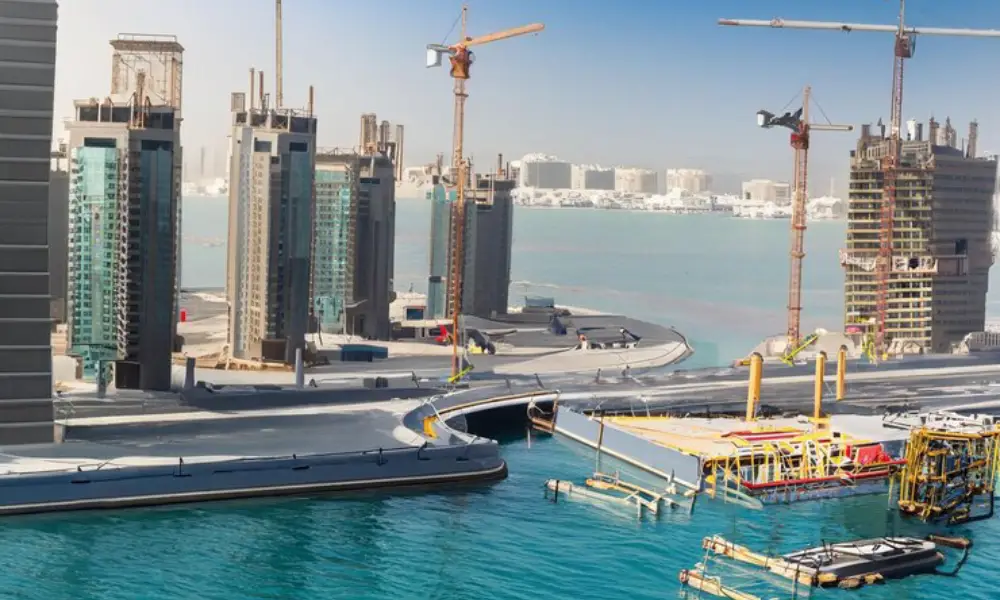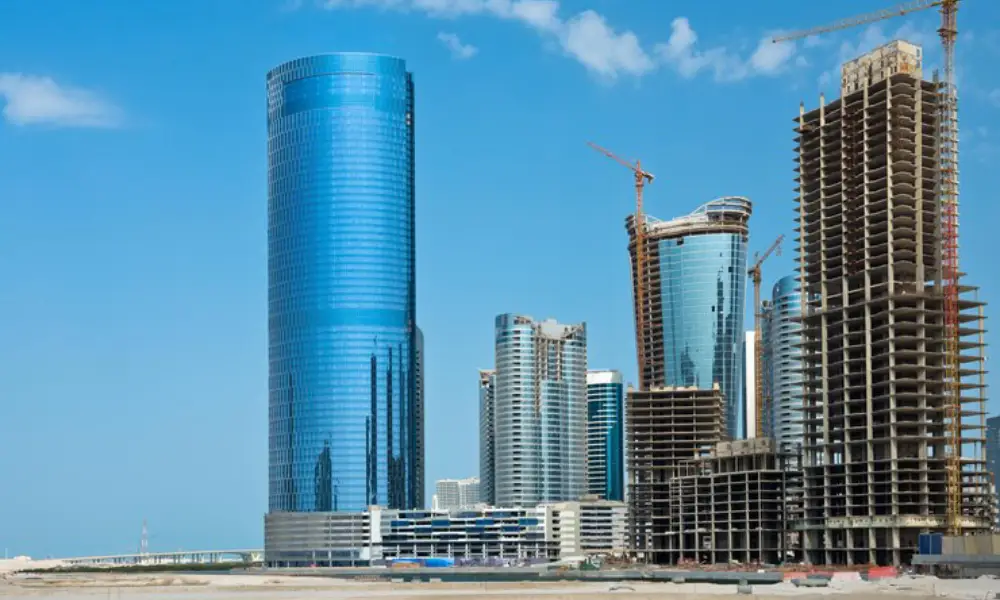
The future of the construction industry in Qatar: Opportunities, Challenges, and Innovations
1. A Comprehensive Look at the Development Outlook in Qatar
Over the past decades, Qatar has transformed into one of the most dynamic economies in the Gulf region. Despite its small size, the country has managed, relying on its energy resources, substantial investments, and development-oriented policies, to establish itself as one of the emerging hubs of the construction industry in the Middle East. In recent years, massive infrastructure projects, modern cities, and smart buildings have dramatically reshaped Qatar’s landscape. Now, following the successful hosting of the 2022 FIFA World Cup, the country stands at the threshold of a new phase of urban development—one founded on sustainability, advanced technologies, and economic diversification. The future of the construction industry in Qatar will be a combination of innovation, quality, and strategic planning, addressing not only the demands of today but also shaping the urban life of the country in the years to come.
2. The Impact of the 2022 FIFA World Cup on Infrastructure and the Future Construction Path
The 2022 FIFA World Cup marked a turning point in the history of urban and infrastructure development in Qatar. This global event not only led to the construction of advanced stadiums with unique designs but also triggered extensive growth in transportation, accommodation, tourism, and urban services. The development of the Doha Metro, new highways, Hamad International Airport, and modern urban networks represents just a part of these transformations. These investments now provide a solid foundation for the future growth of Qatar’s construction industry. After the conclusion of the tournament, many infrastructures were converted into multifunctional urban projects, and stadiums have been repurposed as cultural, commercial, and recreational centers. This approach demonstrates that Qatar, through long-term planning, has turned construction into a tool for sustainable development and attracting foreign investment. The World Cup experience taught the country how to leverage modern architecture, technology, and intelligent resource management to create an efficient and aesthetically pleasing future.
3. Qatar National Vision 2030 and Its Role in the Construction Industry
The Qatar National Vision 2030 is a strategic roadmap aimed at transforming Qatar into a developed, sustainable, and balanced country across all economic, social, and environmental dimensions. This key document defines construction not merely as a civil activity but as a fundamental pillar of national development. According to this vision, future construction projects must align with global standards in energy efficiency, safety, performance, and sustainability. Relying on this vision, the Qatari government promotes policies that encourage investors to adopt modern technologies and environmentally friendly materials.
Vision 2030 emphasizes the creation of smart cities, urban green spaces, and infrastructure resilient to climate change. Additionally, the focus on economic diversification and reducing reliance on oil and gas revenues has stimulated growth in the real estate sector, commercial construction, and urban development projects. As a result, the construction industry in Qatar is undergoing profound transformation, playing a decisive role in achieving the country’s overarching national objectives.
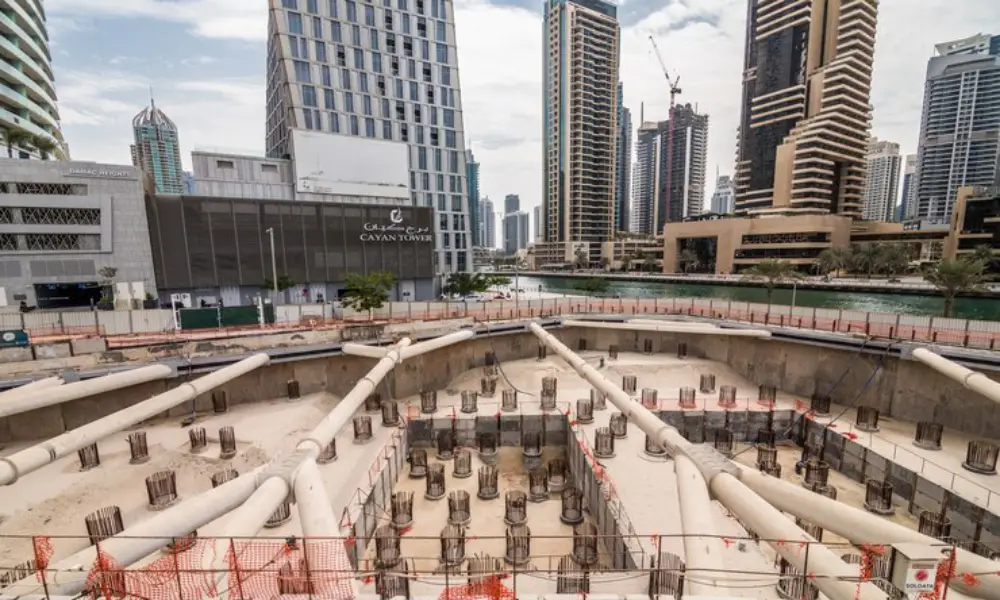
4. Growth of Smart Urban Development and Major Projects in Doha and Lusail
In recent years, Qatar has emerged as one of the regional pioneers of smart cities through the implementation of innovative urban development projects. Doha, the dynamic capital, and the new city of Lusail are recognized as symbols of Qatar’s urban transformation. Lusail was designed from the ground up with a digital mindset, data-driven management, and sustainable architecture, and now hosts luxury towers, international commercial centers, recreational ports, and advanced residential areas. In this city, integrated smart systems manage energy, traffic, security, and urban services seamlessly.
In Doha, projects such as Msheireb Downtown have set an example of urban regeneration centered on technology, culture, and the environment. These areas incorporate smart sensors, green energy management systems, and climate-responsive architectural designs. This approach has not only enhanced citizens’ quality of life but also positioned Qatar as an attractive destination for international investors and urban designers. The future of urban development in Qatar will be based on artificial intelligence, renewable energy, and human-centric design, with Doha and Lusail at the forefront of this transformation.
5. Modern Technologies in Qatar’s Construction: From BIM to 3D Printing
In recent years, Qatar’s construction industry has undergone a remarkable transformation through the adoption of modern technologies. One of the most important of these is BIM (Building Information Modeling), which enables precise design, project management, and coordination among architectural, engineering, and execution teams. The use of BIM has significantly reduced construction errors, lowered costs, and accelerated project delivery times.
Additionally, 3D building printing, as an advanced innovation, allows for the construction of complex structures with higher speed and lower costs. This technology has been particularly applied in residential projects and experimental buildings in Qatar, reflecting the country’s commitment to innovation and optimization of construction processes.
Other technologies, such as construction robotics, artificial intelligence for project management, and the Internet of Things (IoT) in infrastructure and smart buildings, are also utilized to enhance quality, safety, and efficiency. Integrating these technologies with sustainable design has positioned Qatar as a leading destination in the construction industry, charting a future of construction built on innovation and high productivity.
6. Focus on Sustainability and Green Buildings in Qatar’s Construction Policies
Sustainability and environmental protection have become key principles of Qatar’s construction policies. The government, by adopting international standards and implementing green building projects, strives to align the construction industry with environmental principles. Green buildings in Qatar utilize technologies for energy reduction, optimized ventilation and natural lighting, rainwater harvesting, and the use of recycled materials.
Programs such as the Qatar Sustainability Assessment System (QSAS) demonstrate Qatar’s commitment to assessing and improving the environmental performance of buildings. These policies not only help reduce environmental impacts but also lower operational costs and enhance the economic value of projects.
Furthermore, Qatar’s smart cities and modern urban projects have created infrastructure powered by clean energy, sustainable transportation, and abundant green spaces. By focusing on sustainability, Qatar’s construction industry is moving toward global integration and compliance with international standards, ensuring a green and intelligent future for the country’s urban development.
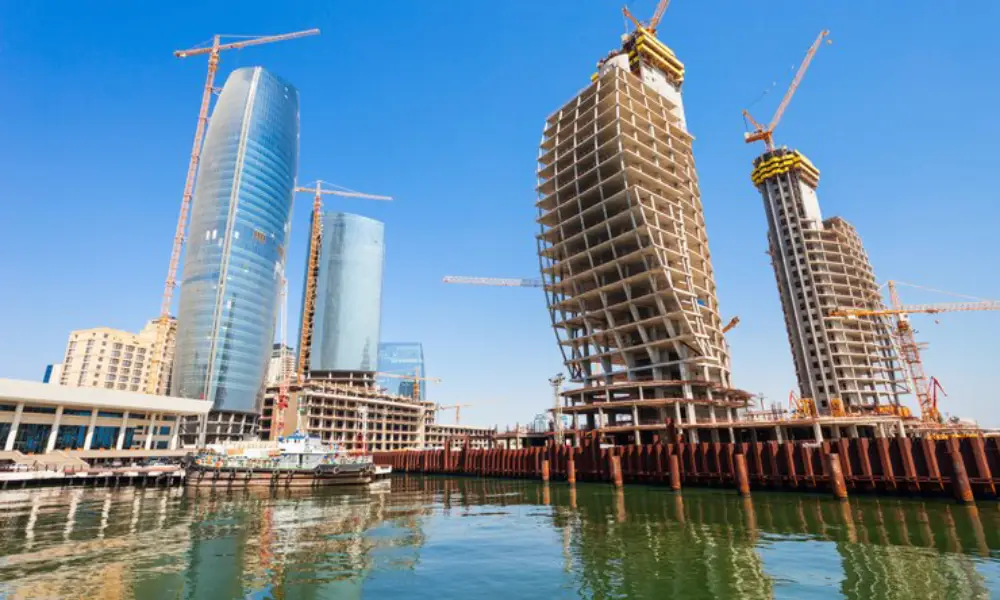
7. Governmental and Private Investments in Housing and Infrastructure
Qatar’s construction industry is heavily influenced by targeted government investments and a growing flow of private sector funding. By allocating substantial budgets to infrastructure projects such as airports, ports, highways, and urban transport networks, the government has created a foundation for sustainable and modern development. These investments not only support urban growth but also provide opportunities for the private sector to expand in housing, commercial complexes, and multifunctional projects.
On the other hand, private investors contribute significantly to the transformation of the construction industry by engaging in long-term projects, luxury buildings, and recreational complexes. Collaboration between the public and private sectors has enhanced design and execution quality, promoted the adoption of modern technologies, and reduced project risks.
This joint approach positions Qatar as an attractive destination for international investors and ensures that the growth of the construction industry is accompanied by strategic planning, innovation, and sustainability. The future of construction in Qatar, shaped by this dual collaboration, follows a clear and sustainable economic and technological path.
8. Developments in the Commercial and Residential Real Estate Market After the World Cup
Following the successful hosting of the 2022 FIFA World Cup, Qatar’s real estate market has undergone significant transformations. The growth in demand for residential and commercial units in Doha and new cities like Lusail is clearly noticeable. Infrastructure projects associated with the global event, including the metro, highways, and luxury hotels, have substantially increased the value of surrounding properties, attracting both domestic and international investors to the Qatari market.
Post-World Cup, the housing market has moved towards sustainable development with a focus on construction quality, access to amenities, and modern designs. Similarly, the commercial real estate sector, with an increase in office spaces, shopping centers, and multifunctional complexes, has adapted to meet the needs of a dynamic economy and innovative businesses.
These developments demonstrate that the World Cup was not only a sporting event but also a catalyst for Qatar’s economic and urban regeneration. The future of the country’s real estate market, leveraging advanced infrastructure, smart projects, and continuous investment, holds high potential for growth and diversification in both residential and commercial sectors.
9. The Role of Skilled Labor and Human Resource Challenges in the Future of Construction
Skilled labor is considered a key pillar in the development of Qatar’s construction industry. With the increase in complex projects and modern construction technologies, the demand for engineers, architects, technicians, and specialists in project management and digital technologies has grown significantly. The quality and efficiency of projects are directly linked to the skills of the workforce, and a lack of expertise can affect both the speed and quality of execution.
Despite Qatar’s efforts to attract international labor, challenges such as training, work culture, safety standards, and adaptation to advanced technologies still persist. In response, the government and private sector implement training programs and skill development courses to enhance workforce capabilities, ensuring global standards are maintained while increasing productivity.
The future of Qatar’s construction industry depends on the country’s ability to develop skilled labor, manage large-scale projects, and optimize the use of modern technologies. Investment in human resources is the key to the success of long-term projects and guarantees both quality and sustainability in construction.
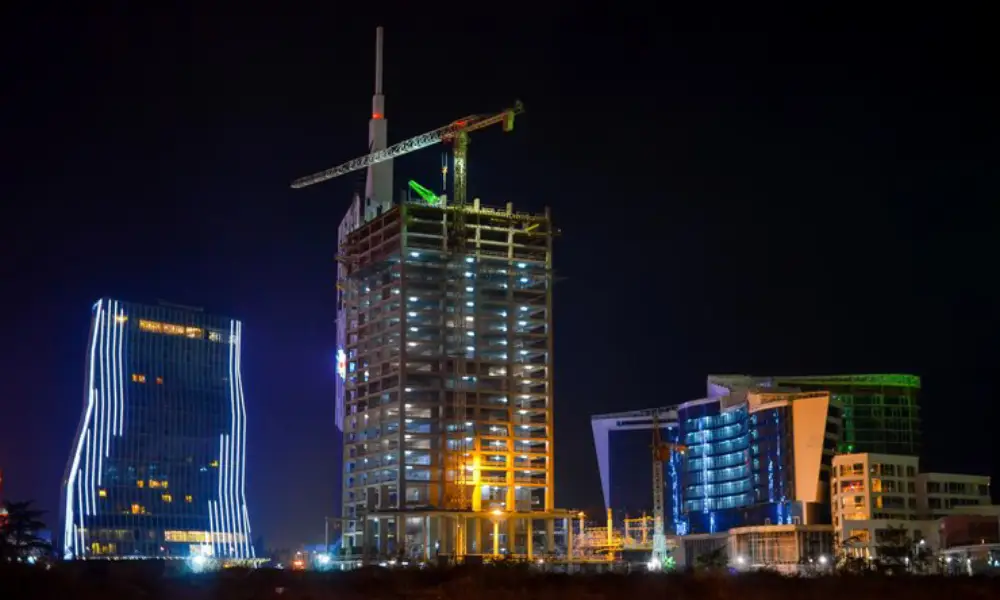
10. Opportunities for International Collaboration and Attracting Foreign Investors
Through the implementation of extensive infrastructure projects, Qatar has become an attractive destination for international investors and companies. International collaboration in construction allows the country to leverage global experience, modern technologies, and contemporary standards, executing projects with higher quality and efficiency.
Qatar’s incentive policies, including tax exemptions, simplified company registration, and support for foreign direct investment, provide a secure and reliable environment for investors. Additionally, multifunctional projects and smart urban developments create opportunities for cooperation between local and international companies, enabling the transfer of advanced knowledge and technology.
This approach not only promotes sustainable development in the construction industry but also strengthens Qatar’s role as a regional hub for construction. The future of the country’s construction sector, benefiting from foreign investment, global collaboration networks, and technical knowledge exchange, will experience a sustainable and innovative growth trajectory.
11. The Impact of Artificial Intelligence, Internet of Things, and Robotics on Qatar’s Construction Industry
Qatar’s construction sector is rapidly adopting advanced technologies, with tools such as Artificial Intelligence (AI), the Internet of Things (IoT), and robotics playing a crucial role in this transformation. AI assists in analyzing project data, predicting execution issues, and optimizing scheduling, while IoT enables monitoring of energy consumption, equipment status, and intelligent building management.
Robotics also has extensive applications in project execution, ranging from prefabricated installation and precise concrete pouring to mapping and safety monitoring on construction sites. Integrating these technologies with traditional construction methods significantly enhances project accuracy, speed, and safety, while reducing costs.
These trends indicate that Qatar is on the path to transforming its construction industry into a smart, efficient, and data-driven sector. Leveraging AI, IoT, and robotics not only ensures the quality and durability of buildings but also positions the country as a leading example in regional and global construction innovation.
12. Forward-Looking Building Materials and Qatar’s Inclination Toward Durable Resources
With a focus on sustainability, Qatar’s construction industry has increasingly turned to forward-looking building materials. These materials include highly durable, climate-resistant, thermally and acoustically insulated, and recyclable resources, which not only enhance building quality but also reduce environmental impact. The use of advanced concrete, lightweight steel, smart glass, and recycled materials has become common in modern Qatari projects.
Qatar is also seeking local and sustainable sources to reduce dependence on imports and optimize the construction supply chain. This approach not only creates environmentally friendly projects but also lowers maintenance and energy costs of buildings.
With the expansion of smart cities and infrastructure projects, Qatar’s emphasis on durable materials and advanced technologies demonstrates the country’s commitment to long-term, sustainable construction aligned with global standards. The future of Qatar’s construction industry will be shaped by quality, durability, and environmental compatibility.
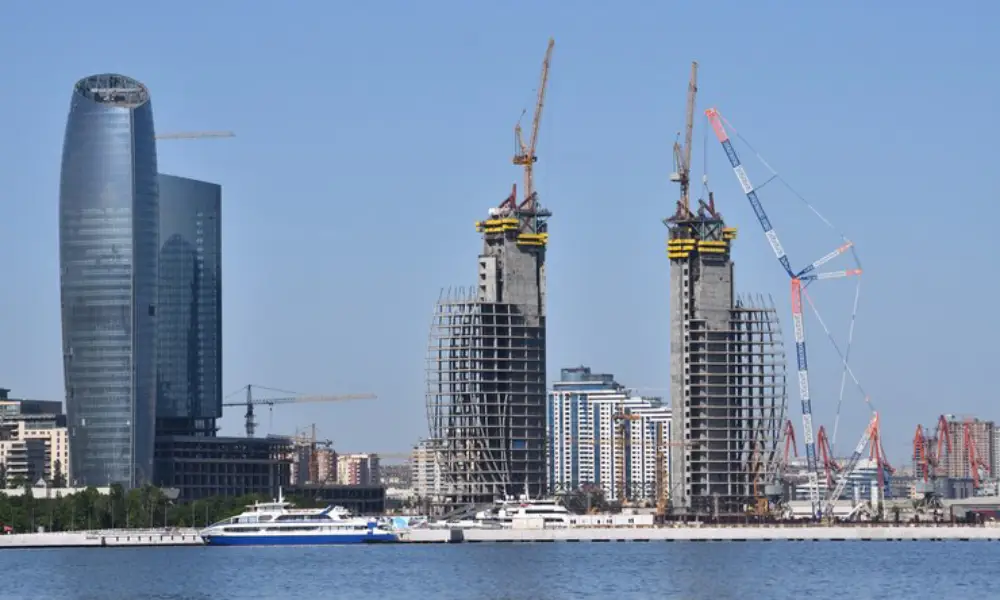
13. Economic and Environmental Challenges Facing Qatar’s Construction Industry
Despite rapid growth and modern projects, Qatar’s construction industry faces significant economic and environmental challenges. Economically, fluctuating material prices, high skilled labor costs, and the continuous need for investment in advanced technologies place considerable pressure on construction companies. Proper budget management and resource efficiency are key to reducing the financial risk of projects.
Environmentally, Qatar’s hot and arid climate increases energy consumption and water demand. Buildings must employ durable materials, optimized design, and energy-saving technologies to mitigate environmental impact. Additionally, construction waste management and carbon emission reduction are major challenges for the sector.
To address these issues, Qatar’s government and private sector are implementing environmental standards, developing green buildings, investing in renewable energy, and utilizing smart technologies to provide sustainable solutions. Success in this path ensures continuous and balanced growth for the country’s construction industry.
14. Key Future Projects: New Cities, Free Zones, and Port Development
With long-term planning, Qatar has launched key projects aimed at urban, economic, and logistical development that shape the country’s construction industry outlook. New cities, such as Lusail, with smart design, abundant green spaces, and advanced infrastructure, exemplify modern and sustainable urban planning. These cities focus on comfortable urban living, smart transportation, and multifunctional spaces, setting new standards for urban development in the region.
Commercial and industrial free zones are also being developed to attract foreign investment and facilitate international trade. These zones enable companies to implement large-scale commercial, residential, and recreational projects under streamlined regulations, providing advanced infrastructure for a modern economy.
Furthermore, port and maritime infrastructure development plays a crucial role in enhancing the country’s logistical and trade capacity. Projects like the expansion of Hamad Port allow for efficient and rapid movement of goods and construction materials, placing the construction industry on a path of sustainable and balanced growth. These initiatives reflect Qatar’s commitment to comprehensive development, innovation, and investment attraction.
15. Summary and Forecast for the Next Five to Ten Years of Qatar’s Construction Industry
In recent years, Qatar’s construction industry has witnessed unprecedented transformations, ranging from massive infrastructure projects and smart urban development to the adoption of innovative technologies and a focus on sustainable buildings. The experience of hosting the 2022 FIFA World Cup, alongside governmental and private investments and developmental policies such as the Qatar National Vision 2030, has laid a solid foundation for the future growth of this industry.
Over the next five to ten years, it is expected that Qatar’s construction sector will pursue continuous growth by focusing on smart technologies, durable and sustainable materials, and leveraging skilled labor. The development of new cities, free zones, and advanced ports will enhance international investment opportunities and stimulate both the commercial and residential real estate markets.
Overall, the future of construction in Qatar will be shaped by innovation, quality, sustainability, and international collaboration, positioning the country as a leading model in the region and globally in the construction sector. This trajectory will not only strengthen the economy and urban development but also guide Qatar toward achieving its long-term national goals and global standards.
